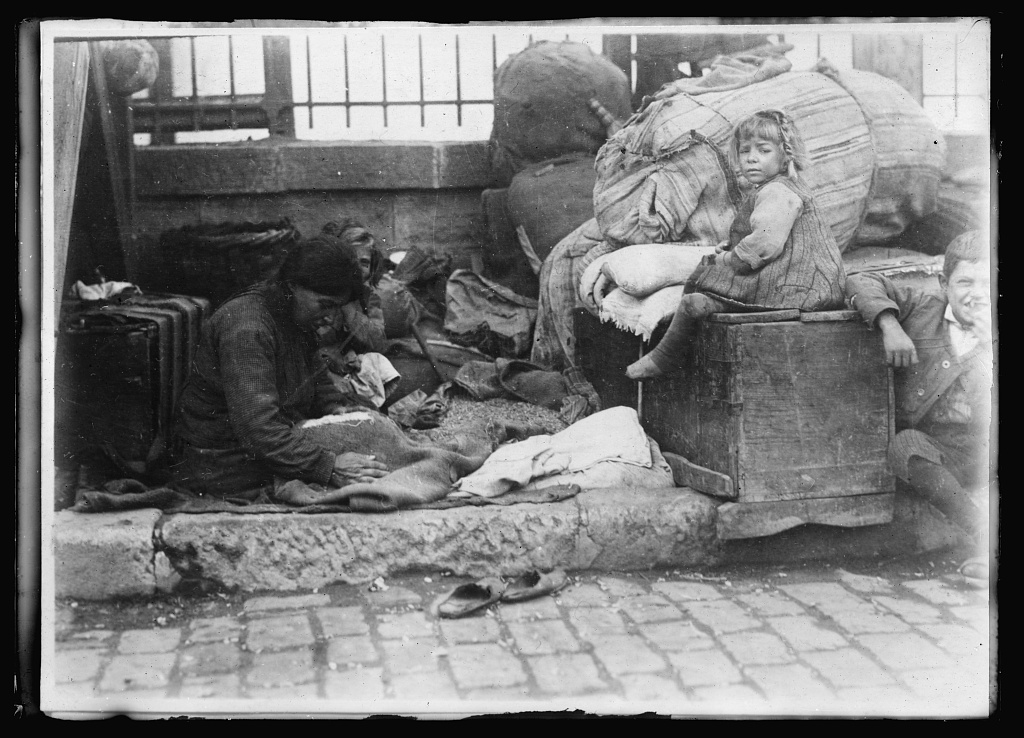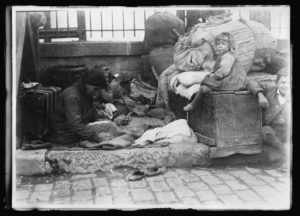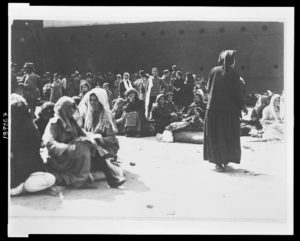The arrival of refugees in Thessaloniki
City
Migration Period
City Narratives
Tag
Category
Full Description
Churches and mosques were commonly used by refugees as temporary accommodation. The best known case in Thessaloniki was the church of Acheiropoietos. It is a three-aisled basilica located at what today is Agias Sofias Street. It was built towards the end of the 5th century and was the first church to be turned into a mosque after the Ottoman conquest of the city by Sultan Murat in 1430.
During the First World War, Acheiropoietos hosted refugees, mainly from Thrace. The church and the refugees were photographed by the renowned Swiss photographer Frédéric Boissonnas, who was in the country at the time on a photo expedition commissioned by the Greek government. The purpose of the expedition was to promote Greece and its claims on the ‘non-liberated regions’ of Northern Epirus and Asia Minor. A similar expedition was undertaken by Boissonnas’ son, Edmond-Edouard, in Smyrna in 1919. In this photograph, we can see the laundry that the refugees have hung to dry in the church yard, as well as a makeshift shack in the foreground, on the left.
Three years later, Acheiropoietos welcomed new occupants, again mainly from Thrace. The photograph comes from the American Red Cross archive and dates back to 1922. This image was certainly not taken as part of a promotion push for Greece. Its documentation mentions the ‘temple of Holy Friday’, the name Acheiropoietos was known by when it was a mosque (Eski Juma Jami, ‘the old mosque of the Friday prayer’). The image shows the sheets, blankets and carpets which were used as makeshift dividers under the pillars, and the scant necessities of everyday life; a washbowl, a jug, a bucket. On the right, a woman is cooking and another one is sewing or knitting. The people are looking at the lens and some on the left are smiling. The female presence is prominent.
Everyday human co-existence changed the sensations and the sounds of spaces like the Acheiropoietos. The quiet of the church or the mosque was replaced by the voices of women and children, reflecting the demographics of the refugee population. The peacefulness of worship gave way to the sounds of a woman giving birth, the din of feasts and fights. Blocking the noise was impossible and the smells were overpowering. The photograph and relevant oral testimonies are in dialogue with the literary portrayal of the situation. In the famous work by Yorgos Ioannou provided here, the writer gives a vivid and succinct description of refugee life in Acheiropoietos and chronicles the occupants’ close relationship with the icon of Panagia Revmatokratorissa [‘Blessed Mary who keeps the river currents at bay’], which the refugees had brought with them and placed in the church.
In 1930, Acheiropoietos reverted back to being a place of worship, but eleven years later it would house refugees yet again. This time, they were people who had left Eastern Macedonia and Thrace, areas which were still under Bulgarian control, and found refuge in Thessaloniki. In a letter dated October 10, 1941, to the General Directorate of Antiquities, a department of the Ministry of National Education, the Director of Antiquities for Macedonia, Charalambos I. Makaronas, complained about the decision by the General Governor of Macedonia to house refugees at the church, as well as the ‘installation of a toilet on the western side of the temple, funded and supervised by the welfare department’.
Bibliography
Eleni Kallimopoulou – Panagiotis K. Poulos, ‘Exchangeable buildings, silent heritages: the temporary accommodation of Asia Minor refugees and the mosques of Thessaloniki’, The Bulletin of the Centre for Asia Minor Studies, issue 19 (2015), pp. 241-270.
Christos Zafeiris, Acheiropoietos: ‘They divided it with blankets and started living…’, blog post, Thessalonikis Topiografia.


